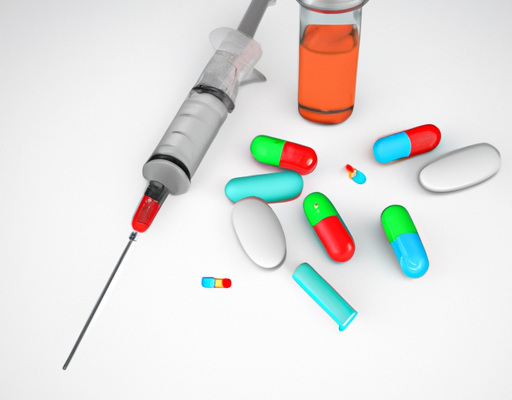• Causes of Diabetes Insipidus
Diabetes insipidus is an endocrine disorder in which an insufficient amount of antidiuretic hormone (ADH) is produced by the pituitary gland, resulting in an inability of the body to concentrate urine. ADH is responsible for regulating the body’s water levels and can be compromised due to various causes. These include damage to the hypothalamus, a tumor on the pituitary gland, or certain medications. Other causes of diabetes insipidus are head trauma, a genetic defect leading to a deficiency of the hormone vasopressin, infections in the brain, or certain diseases like tuberculosis, sarcoidosis, and histiocytosis. In some cases, the cause of the disorder is unknown. It is important to seek medical attention if you become symptomatic as the disorder is treatable with the right combination of medications.
• Gland Deficiencies
Diabetes insipidus is a condition caused by a gland deficiency. It occurs when the pituitary gland, located at the base of the brain, is not producing enough of a hormone called antidiuretic hormone (ADH). This hormone is responsible for regulating the body’s water balance and keeping the amount of urine produced in check. Without it, the body is unable to regulate its water balance, resulting in large amounts of urine being produced. This can lead to dehydration, electrolyte imbalances, and other health problems. Treatment for this condition usually involves hormone replacement therapy, or medications to help regulate the amount of water and electrolytes in the body. With proper treatment, the condition can be managed and symptoms controlled.
• Symptoms
Diabetes Insipidus is a condition caused by the deficiency of a hormone called antidiuretic hormone, or ADH. It is a rare disorder that can be caused by damage to the hypothalamus or pituitary gland, either due to illness, injury or a genetic defect. Symptoms of diabetes insipidus include excessive thirst and frequent urination with large amounts of pale or clear urine. Other symptoms may include fatigue, weight loss, nausea and vomiting. In addition, those with diabetes insipidus may experience headaches, dizziness, and muscle cramps or weakness. It is important to seek medical attention if any of these symptoms are observed, as this condition can be managed with the appropriate treatment.
• Diagnosis
Diagnosis of diabetes insipidus requires medical professionals to look for specific signs and symptoms that point to a lack of the anti-diuretic hormone vasopressin. A thorough physical examination with an assessment of the patient’s medical history and information about the frequency of urination and amount of fluid intake are crucial in determining if this condition is present. Diagnostic tests, such as a fluid deprivation test or a water deprivation test, measure the concentration of urine and how much fluid the body retains when it is not receiving any water. Additional tests that measure the amount of vasopressin in the body may also be ordered. In some cases, an MRI or CT scan of the brain might also be used to diagnose diabetes insipidus. The results of these tests can be used to identify the underlying cause and provide an appropriate treatment plan.
• Treatment Options
Diabetes insipidus is a serious but manageable condition. Treatment of the condition depends on the type and cause. Vasopressin replacement therapy is the mainstay of most treatments, and it involves taking a man-made form of a hormone called vasopressin. A doctor may determine that the person needs to take fluids by mouth or through an intravenous line for rehydration if dehydration is present. Surgery may be necessary if the cause of diabetes insipidus is a tumor or a blockage in the pituitary gland. In cases of psychogenic diabetes insipidus, psychological and mental treatments may be prescribed to address the underlying psychological issues. For those with nephrogenic diabetes insipidus, medications or other treatments may be administered to the bladder in order to help with urine retention. Overall, diabetes insipidus is a treatable and manageable condition, but it is important to work with a doctor and other healthcare professionals to find the right treatment for you.





No Comments